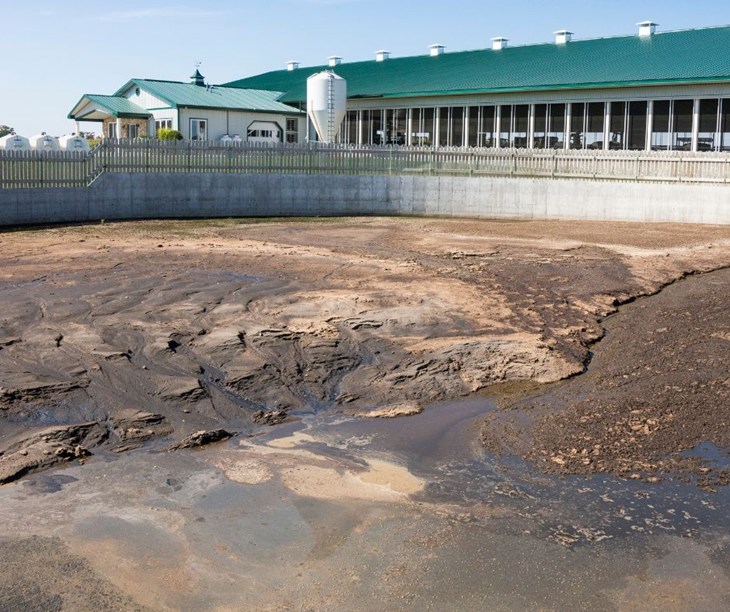4/10/2024
by Madison Longenecker
Most people’s image of a farm in the United States consisting of rolling, picturesque fields with animals happily grazing is far from what is actually happening in rural countryside across the nation. In conversations surrounding industrialized agriculture, a term often comes up to describe large farming operations: CAFO. What does this acronym stand for, and what does it mean?
Concentrated Animal Feeding Operations
CAFO stands for Concentrated Animal Feeding Operation. This term can be used interchangeably with factory farming, industrialized animal agriculture and/or mega-farms. It is a technical term that is used in academia and in policy to describe what many others call a factory farm. CAFOs house immense numbers of animals in densely compacted confinement.
These are no regular farms. These CAFOs usually look like a large, covered barn, or dozens, housed near a waste lagoon. Depending on the size, there can often be a waste lagoon present for each barn.

As of 2022, the Environmental Protection Agency (EPA) has identified 21,000 CAFOs in the United States alone. CAFOs host a series of issues for the farmed animals confined to them and environmental impacts that can lead to public health concerns.
What defines a CAFO?
CAFOs are farms that keep their animals confined for at least 45 days per year, do not grow their own feed or grazing material, and house and house a certain number of animals. Most CAFOs also use artificial manure management, such as manure lagoons, or dry manure handling systems. There are different categories of CAFOs depending on the number of animals and which type of animal is being farmed. For example, a small CAFO of dairy cows is less than 200 but a small CAFO of chickens can consist of up to 37,500 animals.
Cruelty to animals
Animals in CAFOs endure unimaginable suffering. They are seen only as profit and not individual, living beings that can feel a range of emotions from happiness to pain. One of the worst cruelties for animals on CAFOs is that they cannot express natural behaviors, which are essential to biological function and a healthy mental state. Without the ability to act naturally, animals are prone to distress. For example:
- Egg-laying hens are crammed into battery cages, unable to spread their wings or engage in natural behaviors
- Mother pigs, or sows, are confined to gestation crates, barely larger than their bodies, unable to turn around or express social behaviors, the equivalent of a human living their entire lives in a telephone booth.
- Veal calves are kept in tiny crates and taken away from their mothers at a very young age, in addition to being fed a diet of unhealthy milk that can cause them to become anemic.
- Chickens raised for meat, or broiler chickens, are crammed together and given no more room than a sheet of paper to move around, in turn creating conditions for sickness to spread easily. Broiler chickens are also bred to grow so rapidly for a high yield of meat that they falter under their own weight and cannot even stand up.
- Routine practices across species, such as debeaking, tail docking, and castration, are performed without anesthesia, causing unnecessary pain and distress.
Environmental degradation
The concentration of animals in CAFOs leads to staggering amounts of waste production. A single CAFO can generate as much waste as a small city. There are 1.4 billion tons of animal waste produced annually in the U.S., with a large portion of that coming from CAFOs. Whether CAFOs follow regulations when disposing of their animal waste or discharge it illegally, this waste pollutes air, soil, and waterways, contributing to environmental degradation.

Depending on the number and size of the barns on a CAFO, each barn can often have a waste lagoon. CAFOs use the waste lagoons to store the vast amounts of waste that the animals create. They can also opt to spray the manure, through irrigation machinery onto fields.
Lagoons are often left untreated, or flood, and leach into local waterways, creating terrible conditions for local wildlife that can lead to death and habitat destruction.
Public Health Risks
Pollution from CAFOs negatively impacts the environment, which can, in turn, create public health risks. Polluted waterways impact local drinking water in rural communities, creating environmental justice concerns. There are many cases of residents in CAFO-adjacent communities who have become ill and even lost their lives due to CAFO-related sickness. Residents also must unwillingly endure overwhelming smells of waste in their communities.
The rampant use of antibiotics in CAFOs to prevent disease outbreaks in overcrowded and unsanitary conditions has led to the rise of antibiotic-resistant bacteria, posing a significant threat to human health. The World Health Organisation (WHO) says that antibiotics are already failing and that “without urgent action we are heading for a post-antibiotic era in which common infections and minor injuries can once again kill.”

CAFOs supply the perfect conditions for the emergence of zoonotic diseases, such as avian flu, which has been spreading rapidly in 2024 alone, and swine flu, which can mutate from animals and be transmitted to humans.
How to Stop CAFOs
Introducing CAFO moratoriums in your community is increasingly effective in the fight against factory farming.
At Compassion in World Farming, we want to scale up regenerative farming practices and reduce the consumption of animal-sourced foods in populations where these are overconsumed. This will reduce the number of animals in farming systems and steer towards higher animal welfare food systems that are fit for the future and work with nature, not against it.

